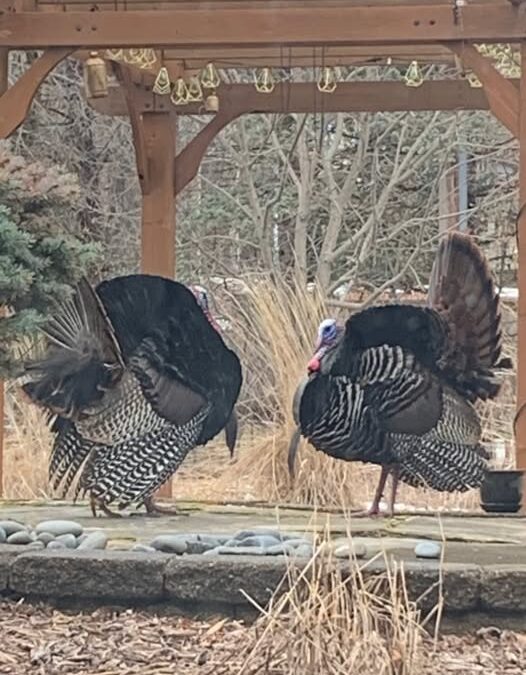When I was growing up in the 1950’s and 60’s, we never saw wild turkeys (Mileagris gallapavo). Now we see them along the road in northern Wisconsin, in my son’s backyard in Roseville, MN and strolling across my daughter’s front yard in West Virginia.
Wild turkeys must have been important in Ben Franklin’s time, because he wanted the Turkey to be our national bird instead of the eagle. We all learn in kindergarten that wild turkeys fed early pilgrims in Massachusetts. But I had never seen a real one until I was almost 50 years old.
We sometimes use the word “turkeys” to impugn the intelligence of a person. But wild turkeys are not stupid. In fact, they are smart and clever. They have 20 different vocalizations for communicating with each other during their social time in family groups. They have excellent eyesight, too, and can run as fast as 25 mph.
They fly well, too. They do not sleep in family groups, but fly to the top branches of tall trees. I have seen them high up in cottonwood trees in Roseville, MN. Once my dog and I scared 2 small turkeys and they flew up to the garage roof instantly and noisily.
Apparently they can even swim, says the Cornell Lab of Ornithology. They tuck in their wings, spread their tails and kick their feet.
In West Virginia my daughter and I passed a large pile of eggs on a ground nest. They reminded us of the way her domestic geese lay eggs piled up on the ground (several female geese may add to the heap of eggs). Turkeys may lay 10-15 eggs and incubate them for 25-31 days. These nests are very vulnerable to predators. Male turkeys do not participate in child-rearing, so the females must leave the eggs to feed.
When baby turkeys hatch, they follow their mother to learn how to forage for food.
They may stay in the family group even after adulthood. Turkeys like cracked corn, acorns, and sunflower seeds. They will return to feed and reward you with their tail-feather antics and their chatter.


